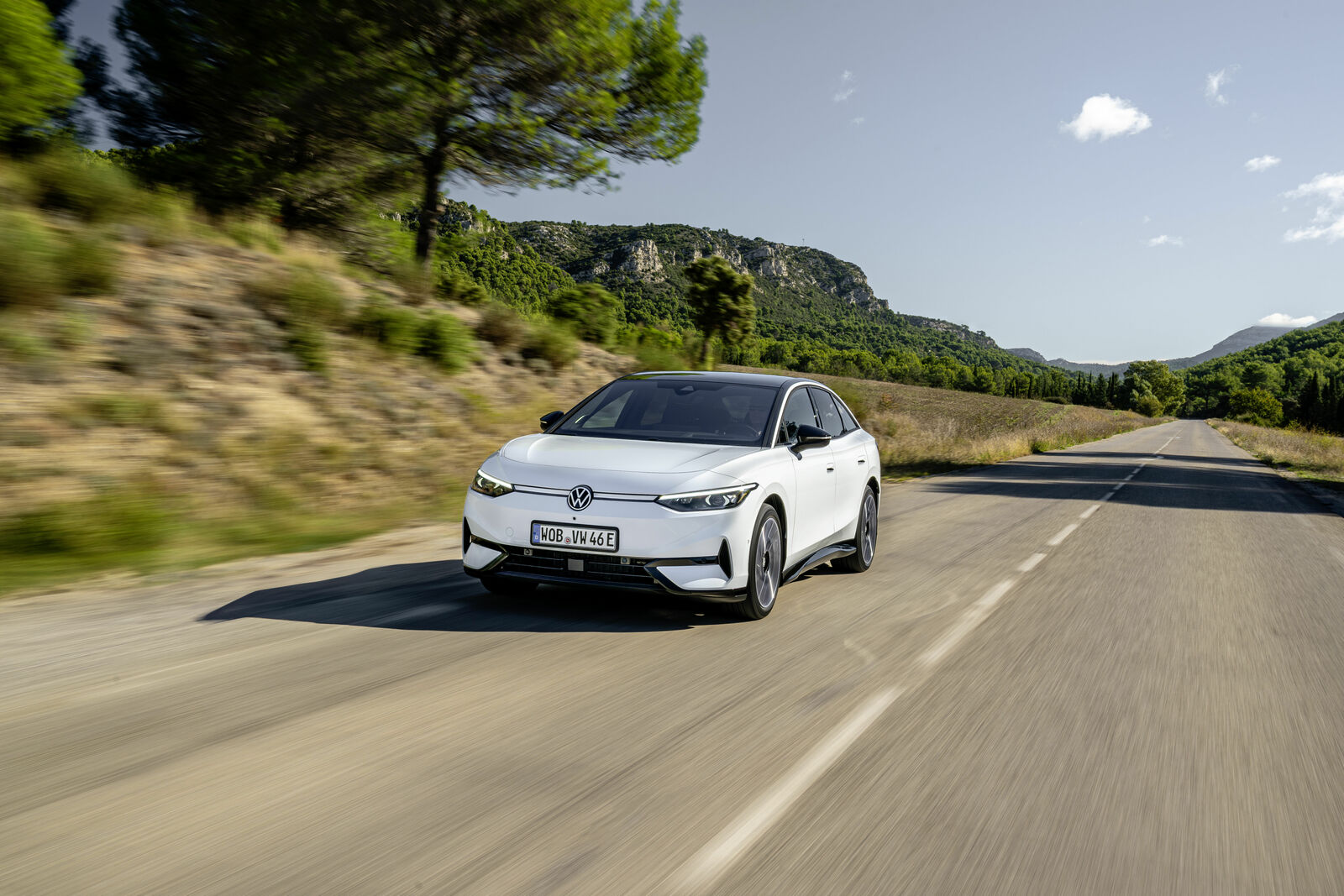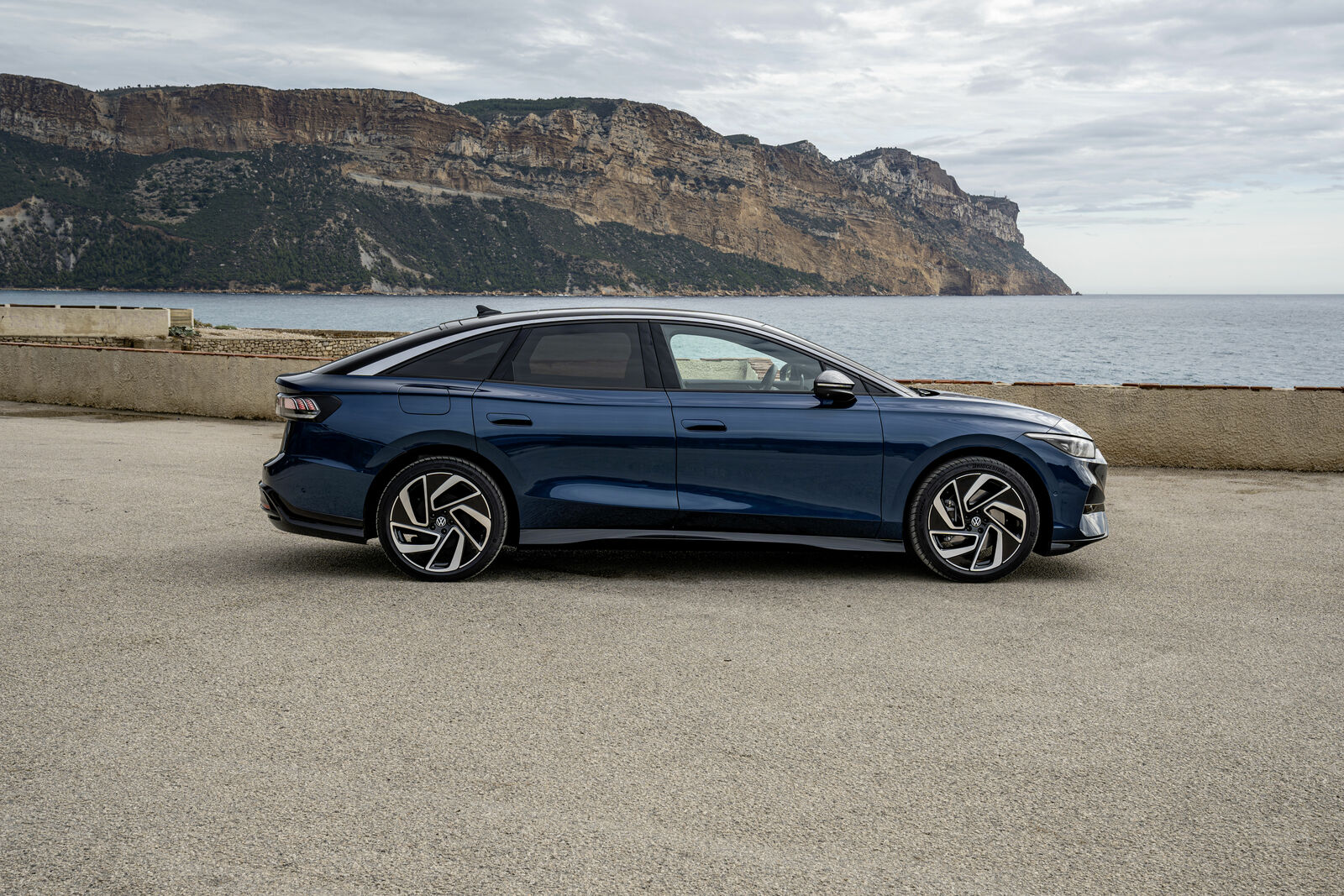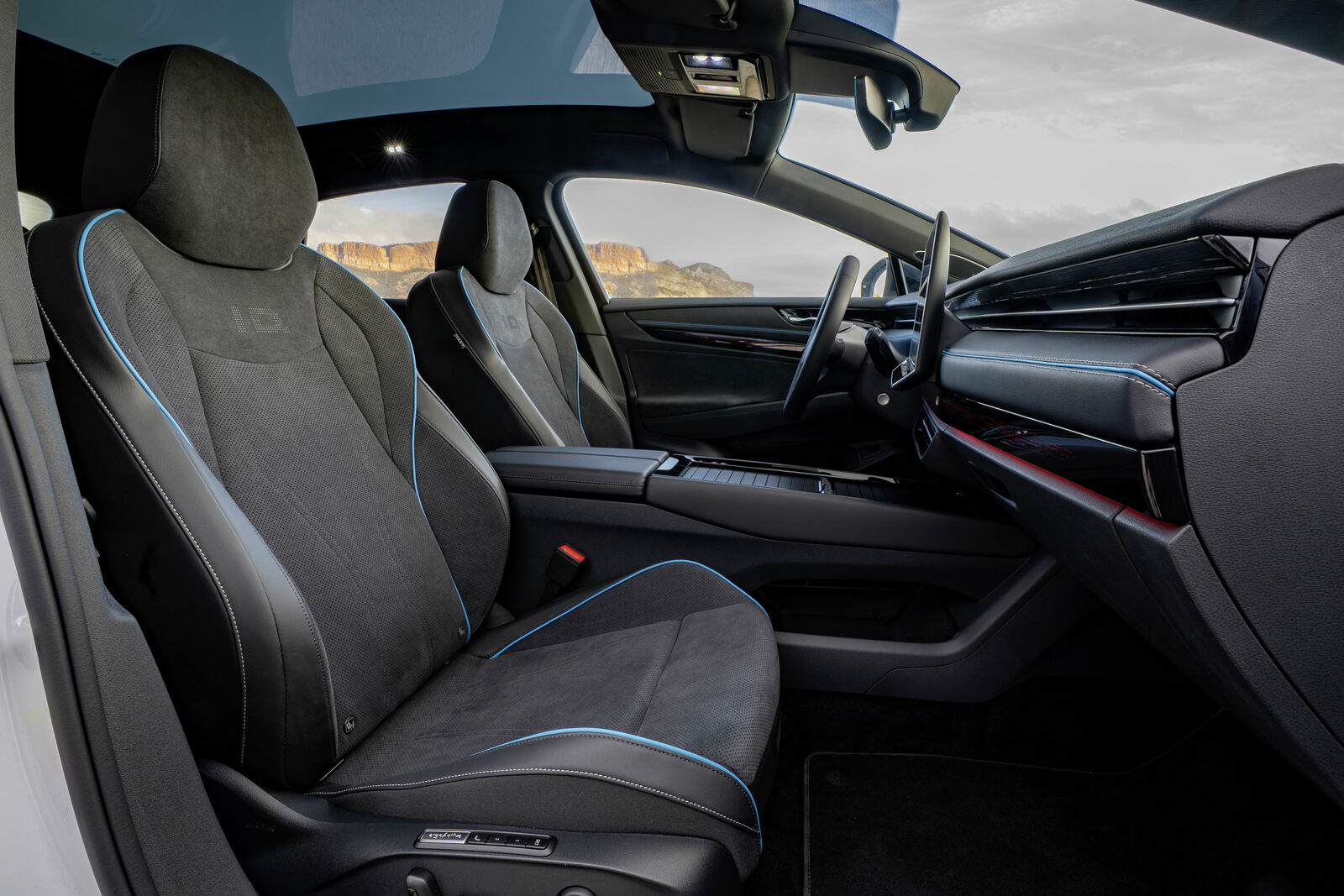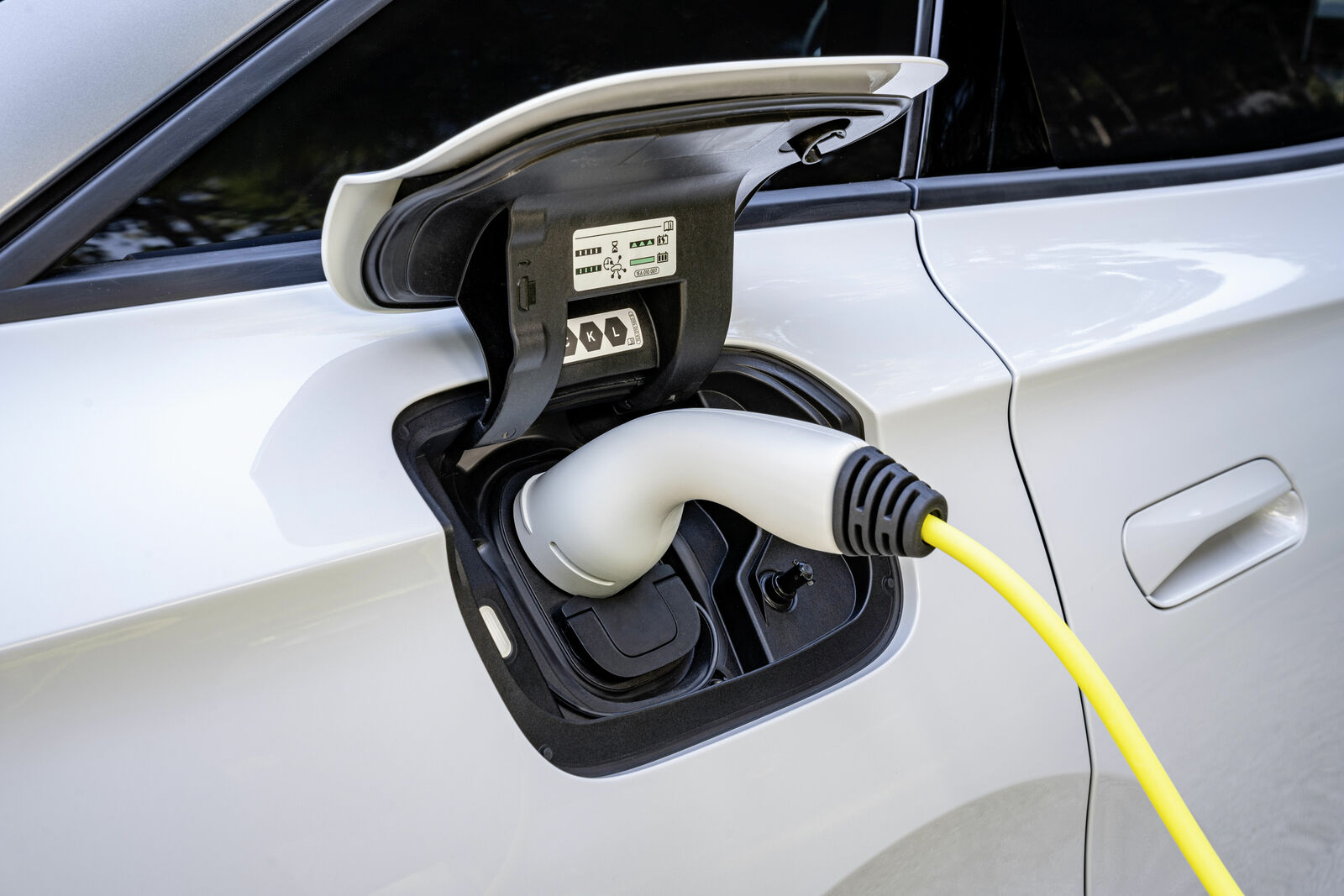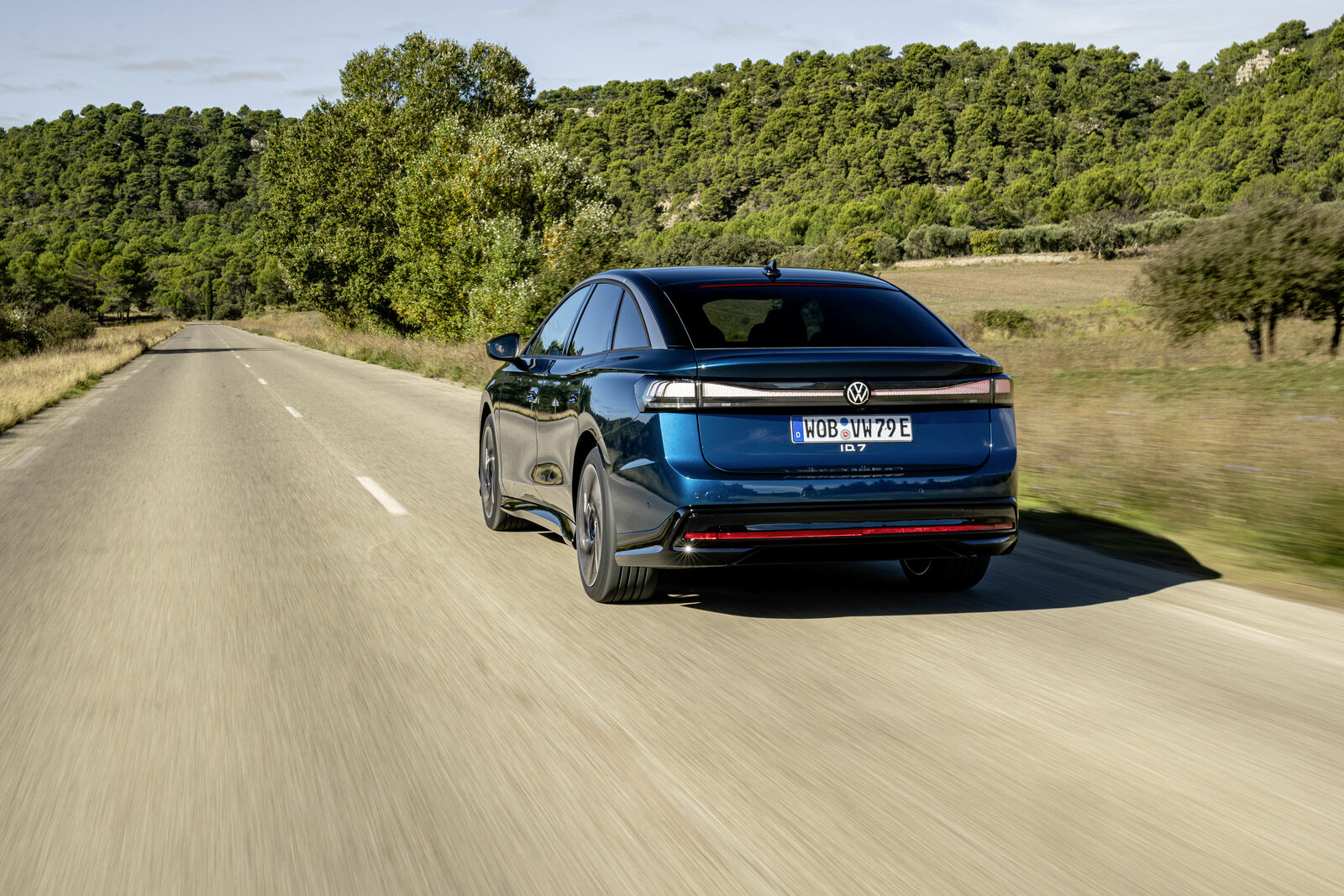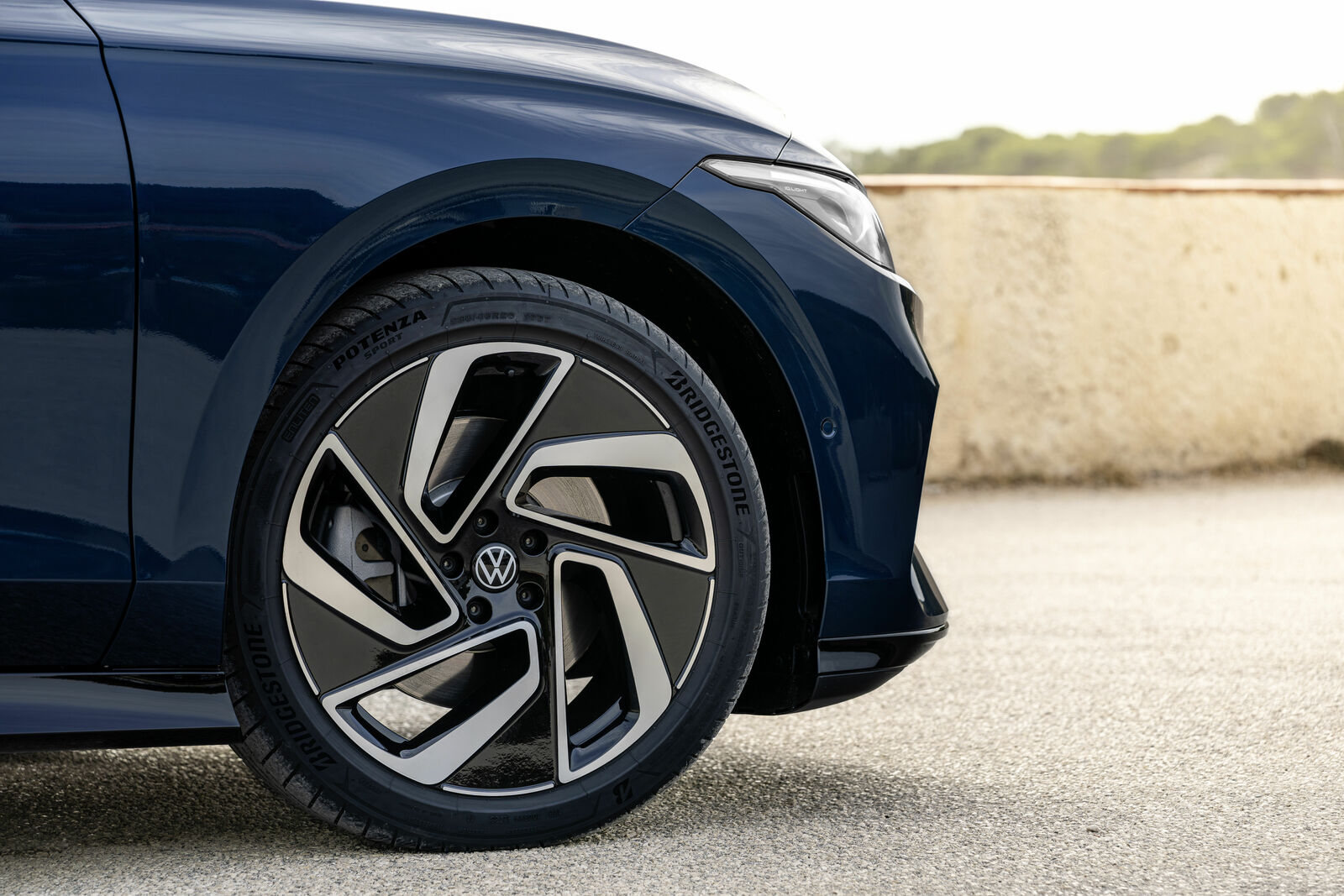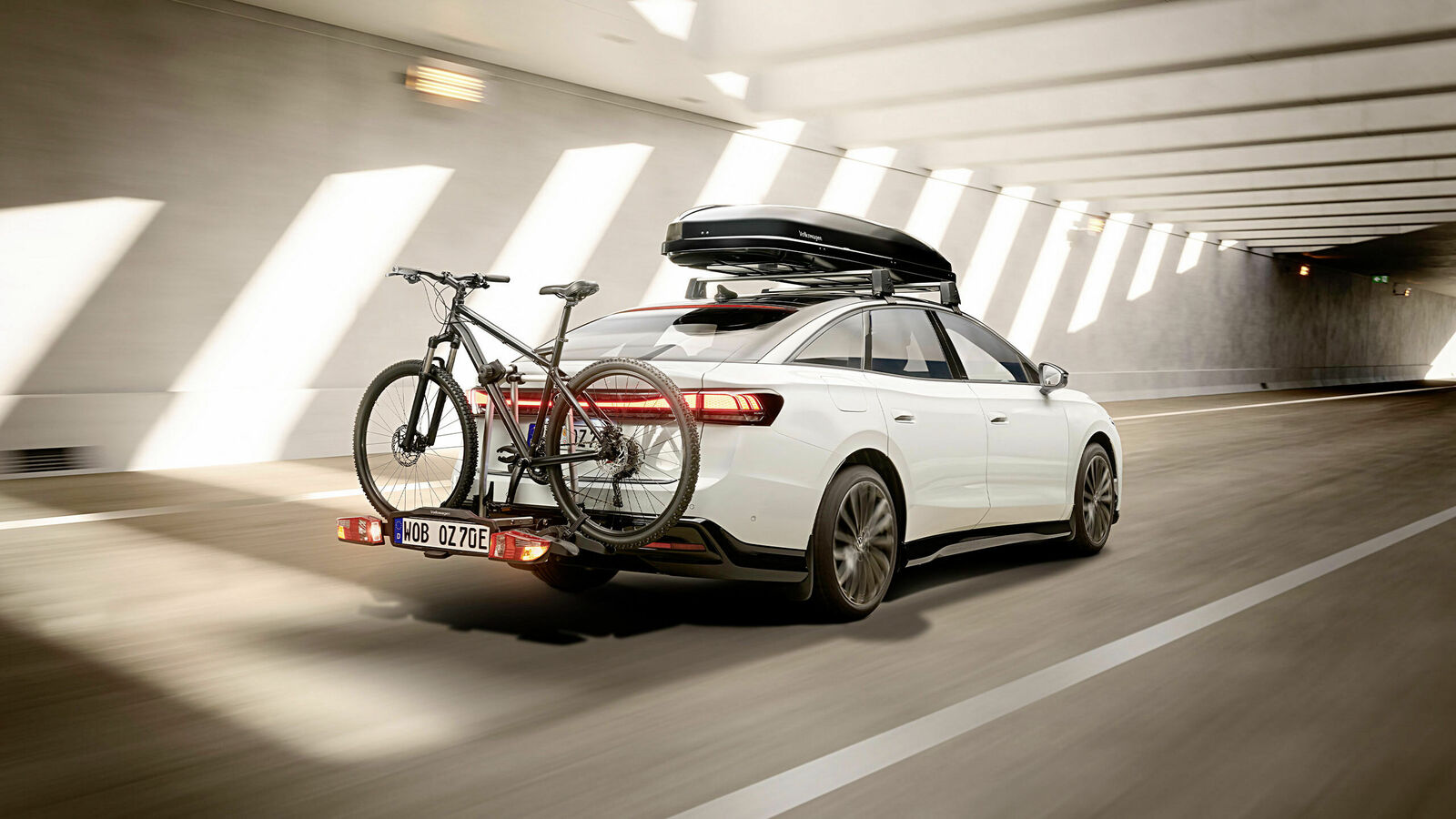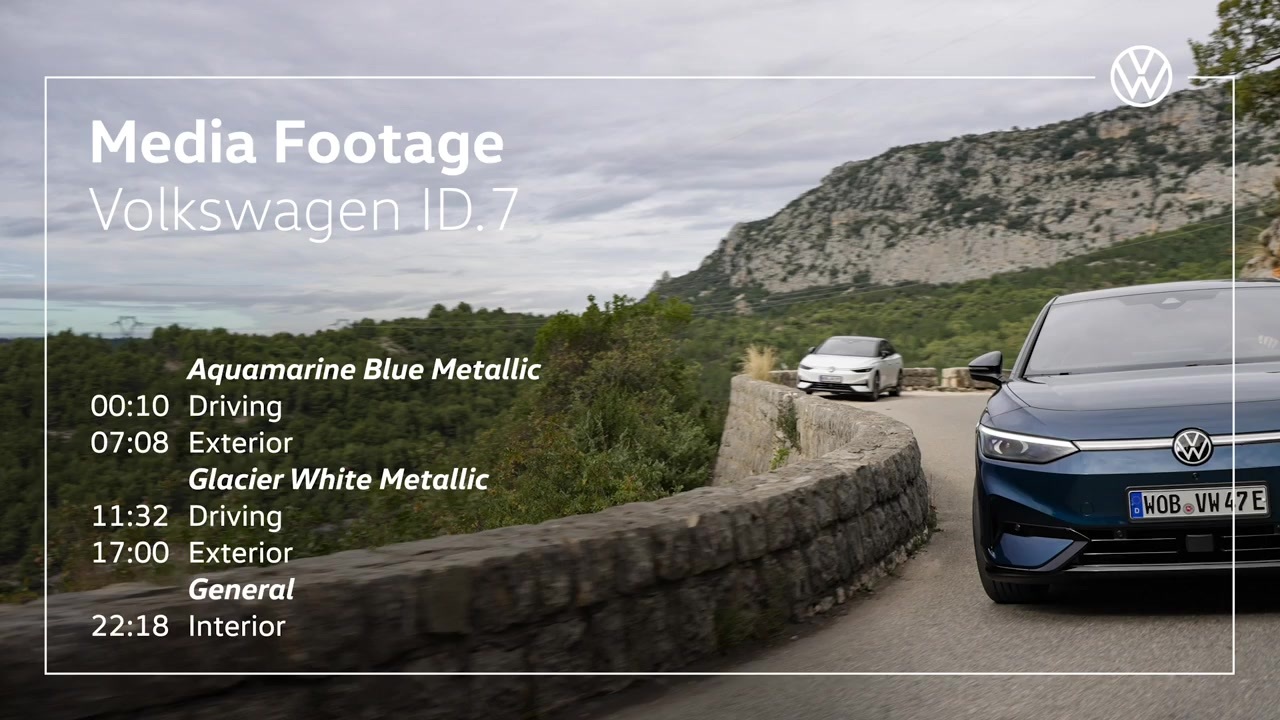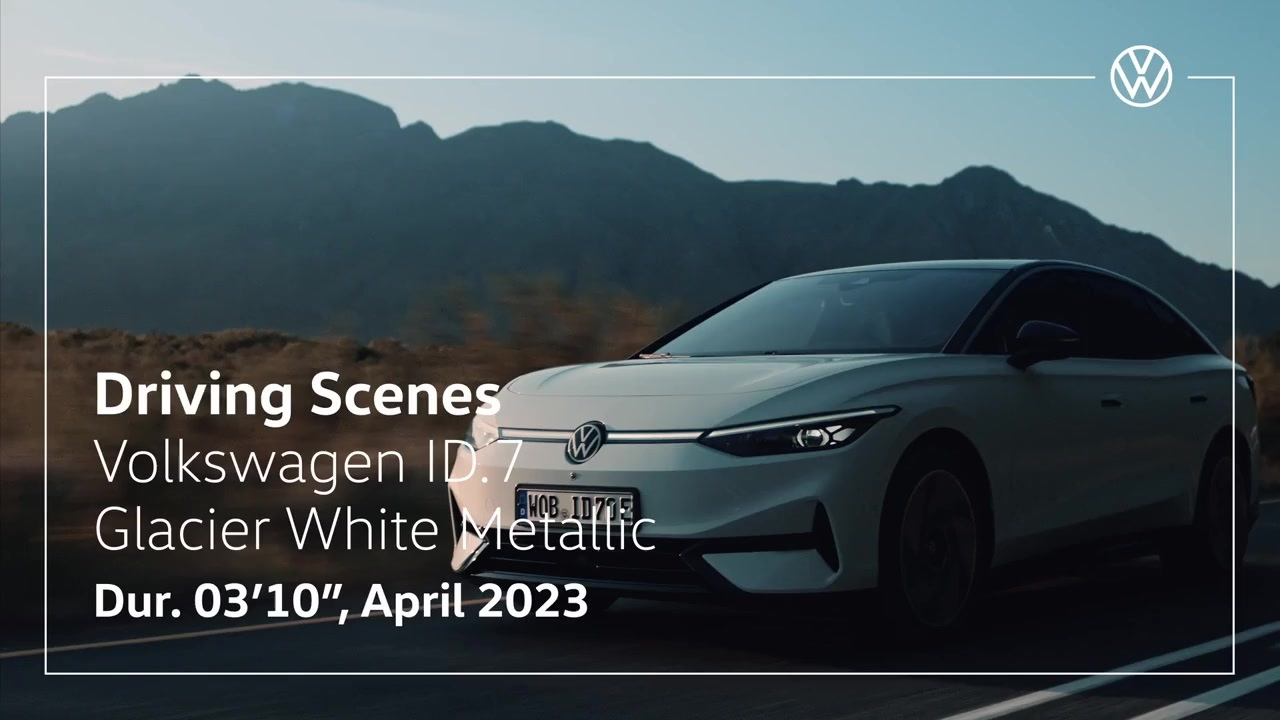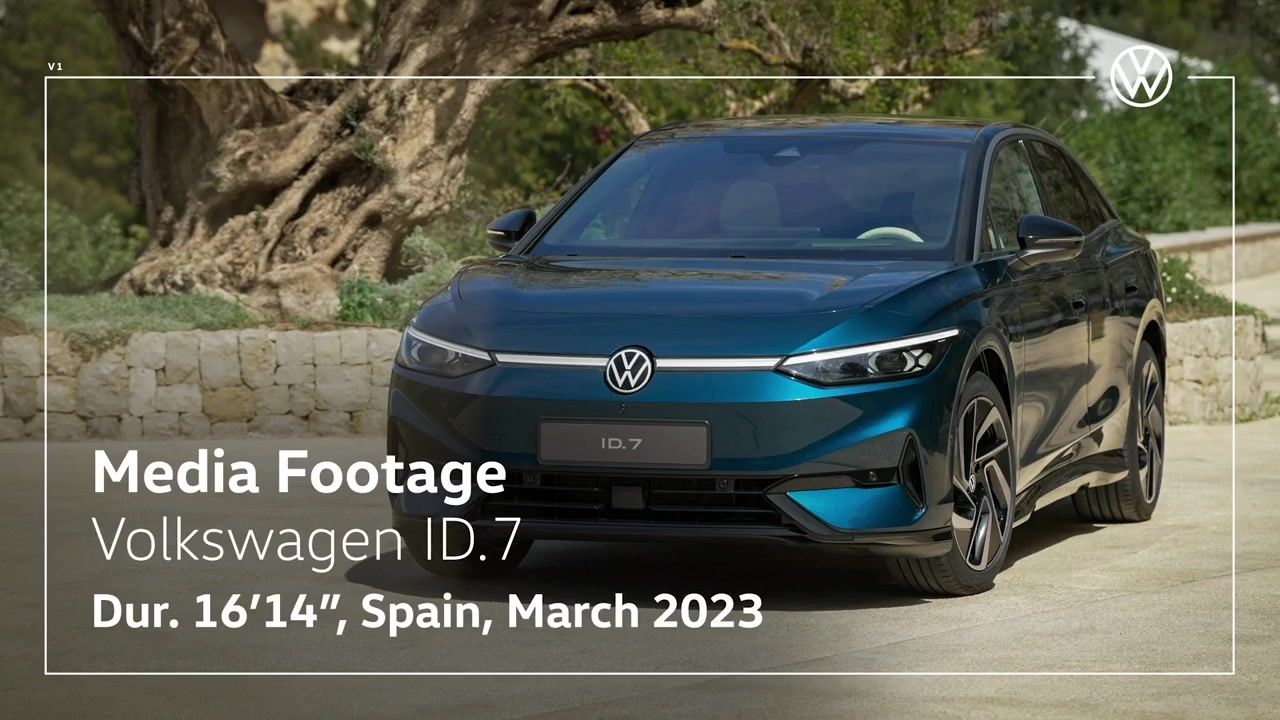The largest ID. model to date. Thomas Schäfer, CEO of Volkswagen Passenger Cars: “Our new flagship model, the ID.7, demonstrates how we are making electric mobility comfortable, convenient and suitable for long distances. The saloon offers top quality, intuitive operation and efficiency that is fun – simply 100% Volkswagen. I am convinced that the car will be very well received by our customers. The ID.7 is one of eleven new electric models that we will be launching by 2027.”
Redefining the cockpit. Alongside the next-generation electric drive, the new ID.7 will also debut a whole host of technical innovations. For instance, the ID.7 is the only vehicle in its class to feature an augmented-reality (AR) head-up display as standard. It projects any information relevant to the journey into the driver’s field of vision, so they no longer have to take their eyes off the road. At the same time, the new AR head-up display changes the cockpit architecture because the traditional instruments have become a lot smaller (as a redundant level of information). This also means that driver’s eyes are focused on the AR head-up display and, as such, on what is happening on the road. Volkswagen has also redesigned the standard infotainment system with an intuitive menu structure and large touch display, which appears to be free-standing and measures 38 centimetres (15 inches) across the diagonal. The temperature and volume control touch sliders under the display are illuminated.
Premium standard of climate and seating comfort. Interaction with the ID.7 has been honed to perfection thanks to a new natural online voice control feature. Its responses to commands and questions are just as comprehensive and interactive as the voice assistants on the latest smartphones. Thanks to more new features – such as automatically controlled air vents with electronic actuators, new optional ergoActive seats with a new pressure point massage function and (in the top-of-the-range seat) automatic air conditioning – the ID.7 offers a level of climate and seating comfort equivalent to the premium class. Another new development is the optional panoramic roof with smart glass; the layers of glass in the sunroof can be electronically switched between opaque and clear – either using a slider in the roof or by voice control.
Long range. In the ID.7, Volkswagen has implemented a host of technical solutions to reduce energy consumption and increase the range. Thanks to a combined WLTP consumption of just 16.3 to 14.1 kWh over 100 kilometres, the electric Volkswagen’s range is close to that of models with a petrol engine. The energy consumption and the high WLTP range of up to 621 kilometres∗ has been achieved through a combination of various factors: The ID.7’s new drive system is particularly efficient and the latest battery cells are characterised by high energy density. Another factor is the aerodynamic body with a drag coefficient of just 0.23, which (depending on equipment) helps to reduce energy consumption.
Silent performance and quick charging. With its almost silent drive and the lowest possible level of wind noise, the disturbance inside the ID.7 is at a standard only ever achieved by luxury saloons in the world of combustion engines. At the same time, the Volkswagen, which is electronically governed at a speed of 180 km/h, also delivers dynamic performance. The ID.7 can accelerate from 0 to 100 km/h in 6.5 seconds∗∗∗. However, a particularly impressive feature is how spontaneously the 210 kW electric drive motor delivers the maximum system torque of 545 Nm to the powered rear axle. The ID.7 can also absorb new energy as quickly as it can accelerate: when charged at DC quick-charging stations under optimum conditions, enough power for up to 204 kilometres (according to WLTP) of driving flows into the battery in just 10 minutes with a charging capacity of up to 175 kW∗∗∗∗. A battery with a charge level as low as 10 per cent can be charged to 80 per cent again in about 28 minutes.
Progressive styling at the front. The design of the ID.7 is based on flowing and muscular lines. For example, the front is largely closed. Here, the design is defined in particular by the three-dimensional design of the bonnet and the LED headlights with their narrow LED strip for the daytime running lights and turn signals integrated at the top of the housing. There is also the option to equip the ID.7 with the latest version of the IQ.LIGHT LED matrix headlights with automatic lighting control, poor weather light, welcome function, dynamic headlight range control and dynamic cornering lights. Thanks to the interaction between the LED headlights and clear lines of the body, the ID.7 appears both focused and confident, but also likeable – the hallmark of a Volkswagen.
Elongated silhouette. A defining style element of the silhouette is the character line located below the long window shoulder with a sharp undercut. This creates powerful and positive tension in the side of the vehicle. The vehicle’s proportions also help the ID.7 to make an elegant and powerful impression from the side. The new Volkswagen is 4,961 mm long and has a large wheelbase of 2,971 mm. The short body overhangs are therefore crisply defined. Despite the fact that the ID.7 is the largest ID. model to date, the fastback saloon is also the flattest with a height of 1,536 mm.
Striking horizontal LED strip at the rear. Horizontal lines emphasise the 1,862 mm wide body at the rear of the fastback model. The most dominant line is a horizontal LED strip, which extends outwards into the wraparound LED tail light clusters (also available as optional 3D LED tail light clusters with animated brake lights and dynamic turn signals). Including the exterior mirrors, the maximum width is 2,141 mm.
Plenty of space for travel. Thanks to its large wheelbase and the compact design of the drive technology, the ID.7 offers a great deal of space in both the first and second rows of seats. This is particularly evident in the rear with the generous legroom. Despite the battery being integrated into the vehicle floor and the lower body height compared to all other ID. models, the ID.7 still offers good headroom. It offers 1,030 mm of headroom at the front (or 1,025 mm with the panoramic roof) and 961 mm at the rear (960 mm with the panoramic roof). At the rear, the electric boot lid allows access to a luggage compartment with up to 532 litres of capacity; when loaded up to the first row of seats, the volume increases to up to 1,586 litres.
The ID.7 remembers the way. Assist systems such as Travel Assist take over assisted lateral and longitudinal control∗∗∗∗∗ of the ID.7 as needed. If desired, the Volkswagen can also support assisted lane changing∗∗∗∗∗ on motorways by means of Travel Assist. The driver monitors the driving manoeuvre, but the strain of driving is significantly reduced. When it comes to parking, the ID.7 can independently perform various types of assisted manoeuvre∗∗∗∗∗. One example is the memory function for Park Assist, which can be used for recurring parking manoeuvres, for example, in a car port at home or in the company car park. Once it has learnt the manoeuvre, the Volkswagen can park completely automatically7 over a distance of up to 50 metres. All the driver has to do then is monitor the parking process.
Exclusive standard equipment. For its launch on the European market, the fastback saloon will be offered as an ID.7 Pro version with a 77 kWh battery. This model comes with an incredibly extensive package of standard equipment. Taking Germany as an example: the scope includes – but is not limited to – 19-inch alloy wheels (Hudson design) with a diamond-cut finish, 10-colour background lighting system, heated multifunction steering wheel, Discover Pro Max navigation system, augmented reality head-up display, IDA voice assistant, assist systems such as Travel Assist, rear view camera system, Park Assist Plus including Park Assist with memory function, the Air Care Climatronic three-zone air conditioning system, LED headlights and LED tail light clusters. The ID.7 for the European and North American markets will be produced in Volkswagen’s electric mobility factory in Emden, Germany.
